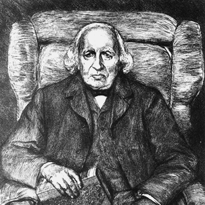 |
Weierstrass came late to mathematics. He entered the University of Bonn at his father’s insistence to study law and public finance, to prepare for entering the civil service; after four years of carousing he left the university without a degree. Weierstrass eventually obtained a teaching license and spent the years from 1841 to 1854 at obscure secondary schools in Prussia. A series of brilliant mathematical papers written during this time, however, resulted in an honorary doctoral degree from the University of Königsberg in 1854. Then, at the age of 40, Weierstrass was appointed to an academic position at the University of Berlin. He exerted great influence there through his teaching of advanced mathematics, attracting gifted students from around the world. Although Weierstrass never published these lectures, his contributions were widely disseminated by the listeners. Weierstrass provided a completely rigorous treatment of calculus by using the arithmetic of inequalities to replace the vague words in Cauchy’s definitions and theorems. The result was a clear-cut formulation of the notion of limit, our now-standard one in terms of epsilon and delta:
Mathematicians erroneously believed that a continuous function must be differentiable at most points. Weierstrass surprised his contemporaries by providing an example of a continuous function that has a derivative at no point x of the real line; namely,
He is also known for extending the comparison test for a series of
constants to
http://208.154.71.60/bcom/eb/article/printable/8/0,5722,120658,00.html http://www-groups.dcs.st-andrews.ac.uk/~john/2AA/2AA-T9.html |